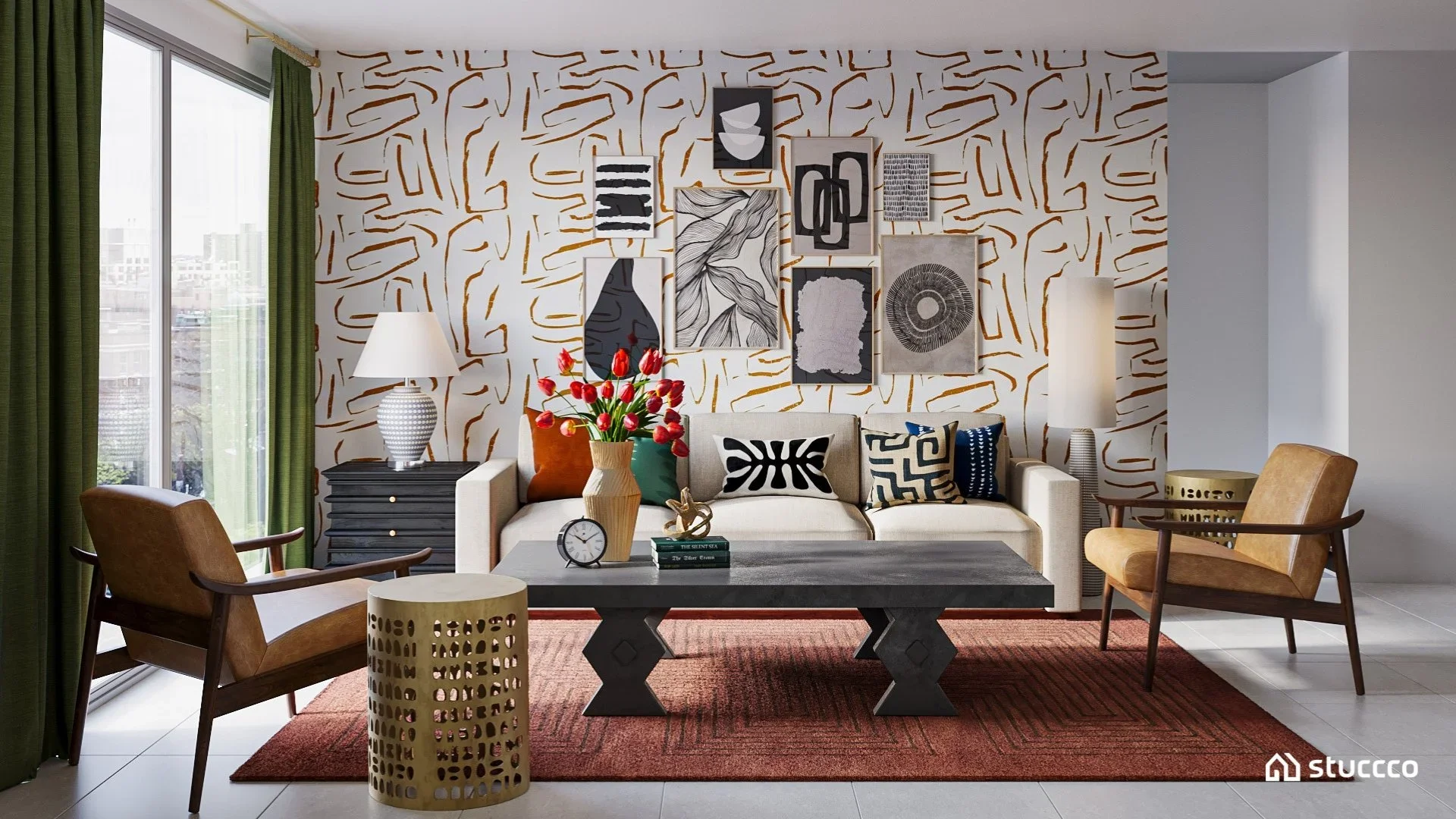Ask Joshua: Is It Okay to Mix Real and Faux Plants in Home Decor?
Hi Joshua,
I’m still getting settled into my new home here in Mill Valley, and I’ve been trying to add plants to different areas of the house. The issue is that some rooms hardly get any natural light, and I know real plants won’t survive in those spots. A friend recommended filling in the darker areas with faux plants, but I’m not sure how I feel about mixing real and faux. I’d love to get your thoughts before I start buying anything.
Thank you,
— Bethany, Mill Valley, California
A world traveler–inspired sunroom designed by virtual interior designer Joshua Jones of JJones Design Co., featuring a curated mix of live and artificial plants in unique planters that bring personality, texture, and global style into the space.
Hi Bethany,
Thank you for asking a great question! And congratulations on settling into your new home in Mill Valley - such a beautiful place to start this next chapter. Mixing real and faux plants is something I hear about often, especially from clients who love greenery but don’t have perfect lighting throughout the house. The good news is: yes, you can absolutely mix both, and when done with intention, they can work together seamlessly.
Use Real Plants Where They’ll Thrive
Start by placing your real plants in the rooms with the most natural light - near windows, in sunny corners, or anywhere they’ll get the consistency they need. Healthy real plants become the visual anchors of your greenery and bring movement, texture, and life into the space.
Use Faux Plants in Low-Light or No-Light Areas
This is where faux plants truly shine. They’re ideal for darker rooms, windowless bathrooms, hallways, built-ins, shelves, or any part of the home where real plants simply won’t survive. Faux greenery can still add that soft, organic feel without the worry of constant upkeep.
Choose High-Quality Faux Plants for a Natural Look
When mixing real and faux, quality makes all the difference. Look for faux plants with matte leaves, realistic stems, and slight variations in color or shape. Anything overly shiny or too symmetrical tends to stand out in a way you don’t want.
Upgrade the Planters to Elevate Everything
Even the most realistic faux plant can fall flat if the pot feels cheap. I always recommend using ceramic, terracotta, concrete, or woven baskets. Adding a bit of moss or soil-like filler to the top helps your faux plants blend right in with the real ones.
Mix Textures, Shapes, and Heights
Nature is never uniform, so mixing different plant shapes, textures, and heights helps everything feel layered and intentional. Pair upright plants with trailing ones, mix broad-leaf foliage with delicate greenery, and vary heights to add dimension.
Keep Faux Plants Clean
A quick dusting every few weeks keeps your faux plants looking fresh and believable.
A Little Behind-the-Scenes From My Own Home
I actually do the same thing you’re considering. Some areas of my home get great natural light, and others don’t - so I mix both real and artificial plants as well. I’ve found some beautifully realistic faux options over the years, but I almost never keep the pots they come in. I usually switch them into planters I really love so they better match my aesthetic. It makes a noticeable difference and helps the faux pieces blend in naturally with the real ones.
If You’d Like a Little Extra Guidance…
Mixing real and faux plants is not only okay - it’s a great way to bring warmth and life into your home without the stress of constant plant maintenance. If you ever need help choosing which plants to use where, or want recommendations on planters that fit your personal style, feel free to reach out. I’d be happy to help you personalize your greenery in your beautiful new Mill Valley home.
Warmly,
Joshua
Have interior design related questions? You can ask Joshua here.


